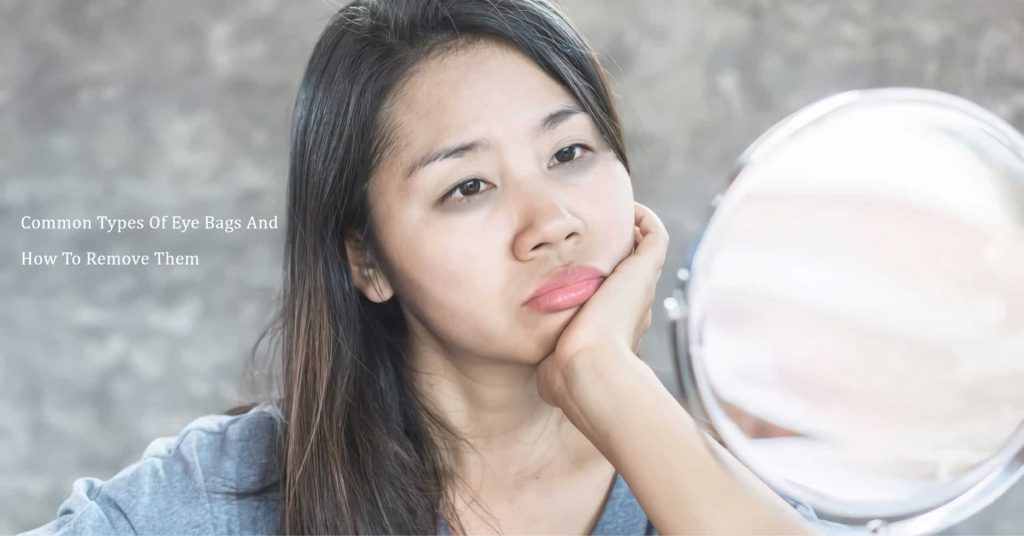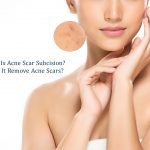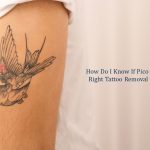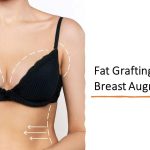Eye bags are a big cosmetic problem that makes the individual look tired and older. They appear as dark circles or droopy bags under the eyes that are usually due to muscle weakness and fat accumulation as the person grows older.
Some lifestyle alterations and home remedies can help alleviate eye bags that occur due to factors such as water retention, allergies, and some sleeping postures. For example, using the right pillow, treatment of allergies, etc., can help minimize eye bags’ appearance.
Nonetheless, eye bags that occur due to other underlying conditions, including genetics, allergies, and aging, might not be cured by home remedies alone. Medical intervention is needed for treating them.
The treatment options available include, home remedies, non-surgical and surgical procedures. But first we will need to understand what causes eye bags to form and what type of eye bags suit which treatment.
- What Causes Eye Bags?
- Types of Eye Bags
- Treatments for Eye Bag Removal
- Non-Surgical Eye Bag Treatments
- Surgical Eye Bag Treatments
- How To Go About Choosing The Right Treatment?
What Causes Eye Bags?
As the skin surrounding the eyes is thin and delicate, the area surrounding your eye is susceptible to wrinkles, puffiness, and fine lines. Eye bags appear due to the following changes.

1. Protrusion Of The Fat Pad Under The Eyes
Several factors decrease the under-eye skin and the elasticity of its underlying soft tissue. Due to the declined elasticity, the orbital fat (that present around the eyes) bulges out over the lower eyelids, resulting in a baggy under-eye appearance.

2. Under-Eye Skin Sagginess
Firm and healthy skin is maintained because of the presence of collagen and elastin. But, these proteins get depleted with time due to certain natural phenomena and adopted habits and practices. As a result, the skin under your eyes loses its firmness and drops.

3. Tear Trough Volume Loss
Muscle and fat loss occur over the area surrounding the eyes, with time as the bones get weakened. It creates a hollow of the tear trough area, leading to “tear trough deformity” that further worsens the eye bag appearance.
Other Factors Causing Under-Eye Bags Occur?
Most frequently, eye bags occur naturally and are not a sign of eye health issues. Under-eye sagginess, protrusion of fat pad, and tear trough deformity occur due to sun exposure, the process of aging, and stressful lifestyle. Family history and fluid retention are also other causes of eye bag development.
1. Sun Damage
An assortment of skin issues develops due to sun exposure. These issues include baggy and puffy eyes.
2. Age
The thickness of the skin around your eyes is much lesser than that found over other body parts. With age, extra fat protrudes out of the orbit, giving rise to the puffiness under the eyes. Your skin further becomes thinner and weaker, resulting in droopiness. The force of gravity is also considered crucial in making the skin saggy, worsening the condition over time.
3. Stressful Lifestyle
Stress can be a huge causative as well as an aggravating factor of eye bags. During stress, blood from the tiny vessels under the eyes can leak and become oxidized. It leads to the formation of dark purple under-eye bags. Excessive alcohol and tobacco add toxic material to the body, contributing to stress and eye bag formation.
4. Family History
Eye bags can also run in families. If one or more of your elder siblings, a parent, or any other close relatives have swollen, discolored eyes, you are also prone to developing bags underneath your eyes.
5. Fluid Retention
Lymphatic fluid is normally present under the eyes, mostly in minute amounts. When too much fluid accumulates under your eyes, it results in uninviting bags.
Types Of Eye Bags
1. Under-Eye Puffiness
Puffiness is the most common type of eye bag condition. This type is characterized by some swelling over the eyelids and underneath the eye socket. It makes the person look exhausted and more tired than ever.
Under-eye puffiness is most pronounced when you wake up in the morning with swollen eyes that are almost impossible to open. It wards off by the end of the day when you are ready to sleep. However, if it doesn’t go away, that’s the second type of eye bags.

2. Dark Circles
The bulging eye bags cast a shadow underneath, giving rise to dark circles, which appear as blue or black discoloration, reflecting severe fatigue and lack of sleep. These are more pronounced in fairer skin complexions.
Dark circles can be treated with home remedies, which do play a role in their correction. You can also hide them out with some makeup.
3. Bagginess
Bagginess forms the “true” under-eye bags. With age, our skin sags and loses its elasticity due to decreased muscle tone in the face. This paves the way for fat to bunch out and form a little pocket beneath our eyes, giving rise to shadows and wrinkles. Although under eye bagginess is not attractive, it does not cause any infection.
These pockets that develop with age do not depart on their own. However, the good news is that eye bag removal without surgery is possible.
There are three types of eye bags:
|
Type of Eye Bag |
Description |
|
Type I |
Least prominent type, involving a minimal accumulation of fat over the under-eye area. It is not noticeable and only visible at specific angles. It can be treated simply by injecting fillers. |
|
Type II |
More pronounced than type I and involves visible bagginess. The accumulated fat forms semi-circles under the eyes and alters the overall facial projection. |
|
Type III |
Most prominent and involves large under-eye semi-circle protuberance. This makes eyes excessively swollen, giving a worn-out look. |
Type-1 Eye Bags
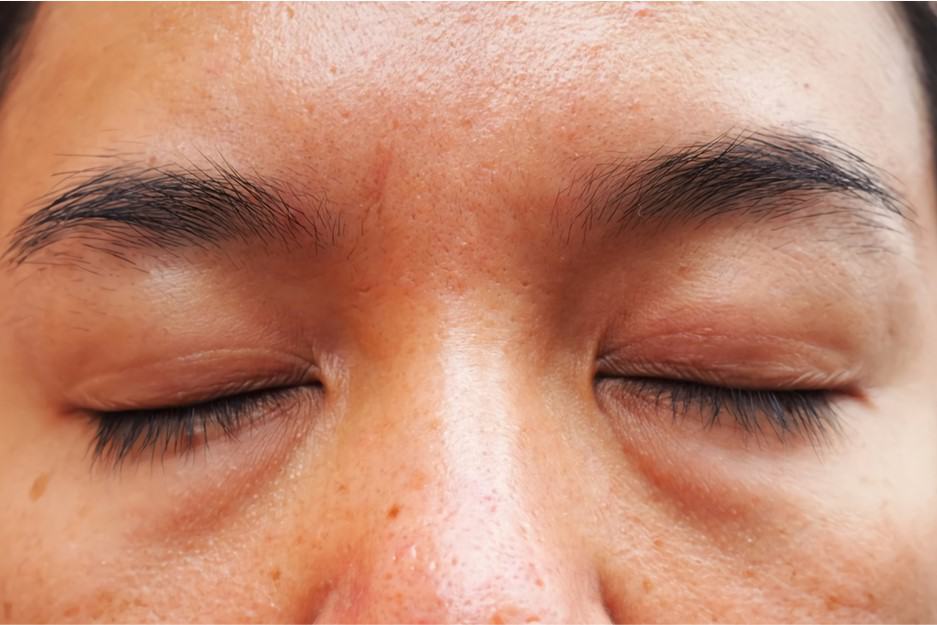
Mainly caused by genetics and aging, and usually identified among younger people, this type is the least prominent one and only contains a small amount of fat under the eyes.
Type-1 eye bags can be easily treated with non-surgical methods such as fillers and laser therapy.
Type-2 Eye Bags
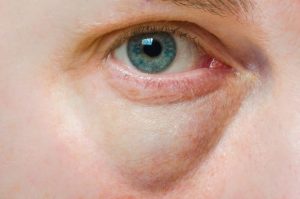
These are more apparent than type 1. The drooping of the skin is severe and forms small half-circles under the eyes.
The accumulated fat and fluid under the eyes cause small swelling that can be initially treated with specific therapies and home remedies. Chronic cases can be best managed through surgical interventions like lower blepharoplasty.
One of the most common causes of type-2 eye bags is the temporary swelling due to seasonal allergies, causing puffy eyes. Dehydration, lack of sleep (sleep deprivation), hormonal imbalance and stress can also cause type-2 eye bags.
Type-3 Eye Bags
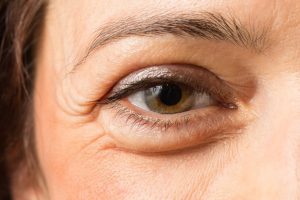
Type 3 eye bags are what most people seek surgery for as it greatly disturbs the appearance of individuals. These occur due to the accumulation of a lot of fat under the eyelid skin and makes the person look tired and old. Home remedies are not effective for the treatment of these eye bags.
Type-3 eye bags are the distinct under-eye pouches that cause the formation of large semi circles and greatly lower the person’s self-esteem.
This eye puffiness is caused by protrusion of under eye fatty tissue (accumulation of large fat deposits) and skin laxity. Surgical removal of excess fat and skin is the only effective option.
Treatments For Eye Bag Removal
There are a few treatments that you can choose from depending on your preference and eye bag type. Here we have organised into 3 main categories: Home Remedies, Non-surgical and surgical treatments for you to make a better decision on the treatments to go for:
Home Remedies
Home remedies can provide temporary reduction in eye bags if they are due to fluid retention and can provide relief only for mild or type 1 eye bags.
These are the first treatment patients try out when they notice sagging or puffiness of eyelids as these methods are relatively inexpensive and easy to access. Home remedies include:
- Cold Compress: Using cold compresses can reduce inflammation and associated swelling. Any cold object available to be used as ice packs, frozen vegetable bags, refrigerated cucumber slices, or spoons placed over both eyes for a few minutes.
- Caffeine: Caffeine also acts as a vessel constrictor. Now, many cosmetic products aimed at reducing dark circles contain caffeine. The individual can also use chilled tea bags.
- Stay Hydrated: Dehydration is a significant risk factor for improving eye bags, and mild types can be prevented or treated with adequate hydration. Good eye serums and creams can provide much-needed hydration.
- Use Retinol Creams: Are known for preventing wrinkles. Retinol is present in many skin-care products as vitamin A is significant for the health of the skin.
- Wear Sunscreen: Ultraviolet rays from the sun are an important causative factor in many skin conditions, and using sunscreen can prevent the formation of eye bags or premature aging.
- Get Enough Sleep: Not getting enough sleep may make the dark circles or puffiness more prominent.
- Diet: Eating more collagen-rich food, vitamin C, and iron-rich foods can help reduce eye bags. Restricting salt in the diet also keeps unwanted water retention at bay.
- Quit Smoking and Drinking Alcohol: Alcohol causes dehydration in the body that could make the eye bags more prominent. Smoking decreases the body’s ability to store vitamin C, which is significant for collagen production in the skin. Smoking can cause wrinkling and the formation of dark circles under the eyes.
Non-Surgical Eye Bag Treatments
After the ineffectiveness of home remedies, consider the non-surgical treatment of eye bags for achieving better results and long-lasting outcomes.
The basic principle of non-surgical procedures is that the accumulated fat under the eyes is melted using heat, laser, or other equipment, and it removes eye bags without leaving scars. As these methods do not involve incisions or scarring, it is popular among patients.
Popular techniques of the non-surgical approach and their approximate costs are given below:
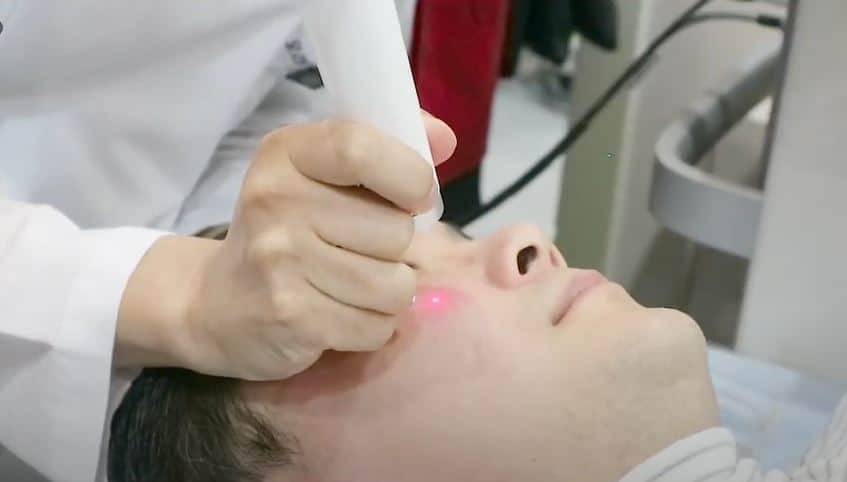
A. Pico Laser
This method is also called Fractional Pico Laser Resurfacing and can be performed using a targeted laser to destroy pigmented cells under the eye while sparing the normal tissues. It leads to the formation of cavities in the deeper layer, which increases the production of collagen and elastin and eliminates dark circles. New collagen also helps to firm and tighten the skin on the under-eye area. This procedure usually costs around $200 – $300.
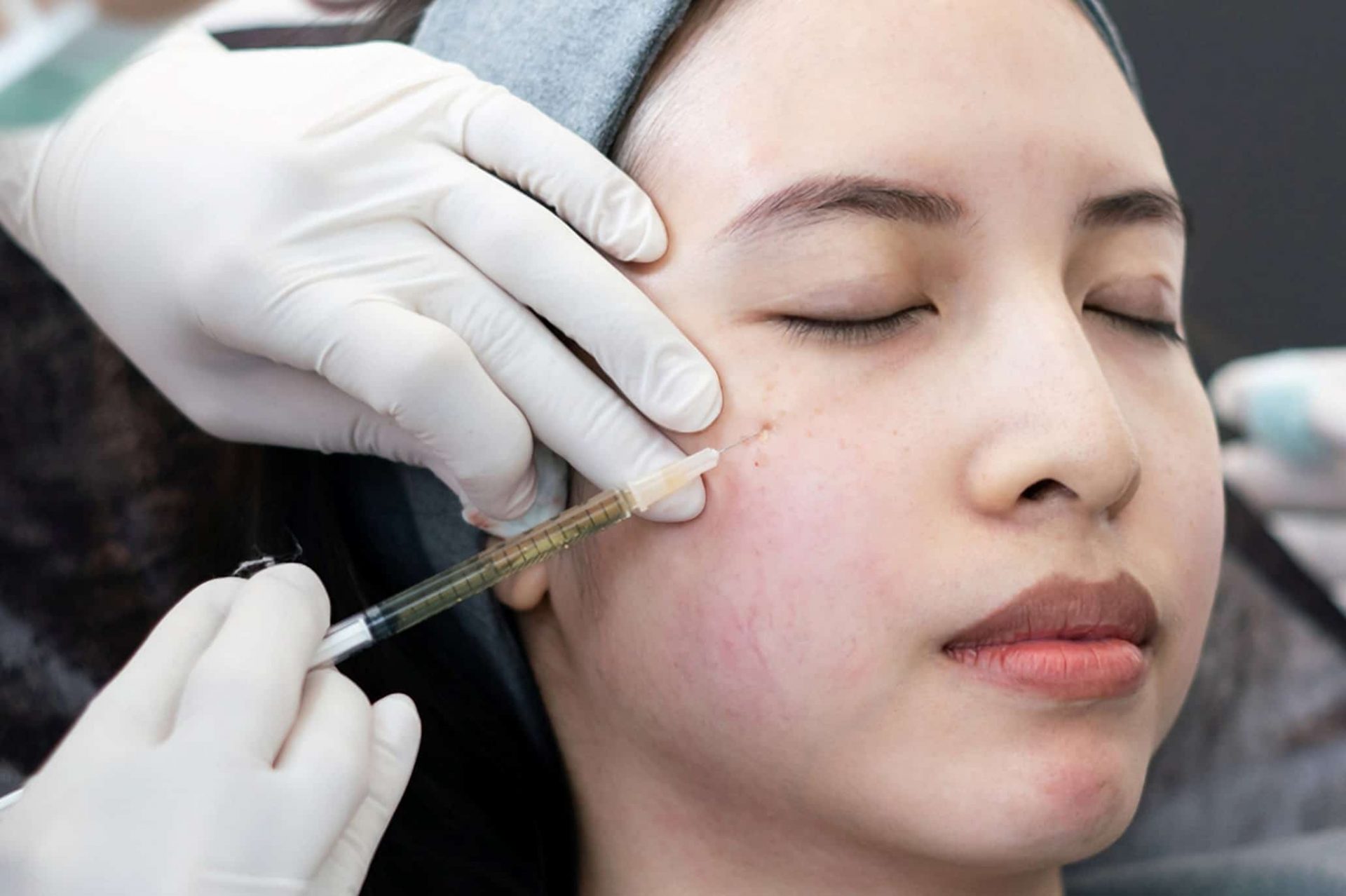
B. Fillers
Cases where the tear trough is more prominent, dermal fillers containing hyaluronic acid help in filling the sunken areas and creases, effectively concealing the presence of the eye bags. The approximate cost of this procedure is around $800 – $900.
Hyaluronic acid filler is a popular and a quick method to improve dark circles, reduce eye puffiness, and conceal the appearance of eye bags.

C. Thermage
Thermage is an approved treatment of the FDA. The skin under the eyes is cured with radiofrequency waves to melt the fat and stimulate collagen regeneration. It helps to flatten puffy eye bags and tighten the skin under the eyes for a smoother and flatter contour. Usually, this procedure costs about $2000-$3,000.
D. HIFU
HIFU or High-Intensity Focused Ultrasound is a technique used to apply ultrasound waves to the skin under the eyes. The distribution of heat energy in the area stimulates the production of collagen and elastin. These are very important for the improvement of skin elasticity, firmness, and treatment of fine lines. The procedure usually costs around $400.
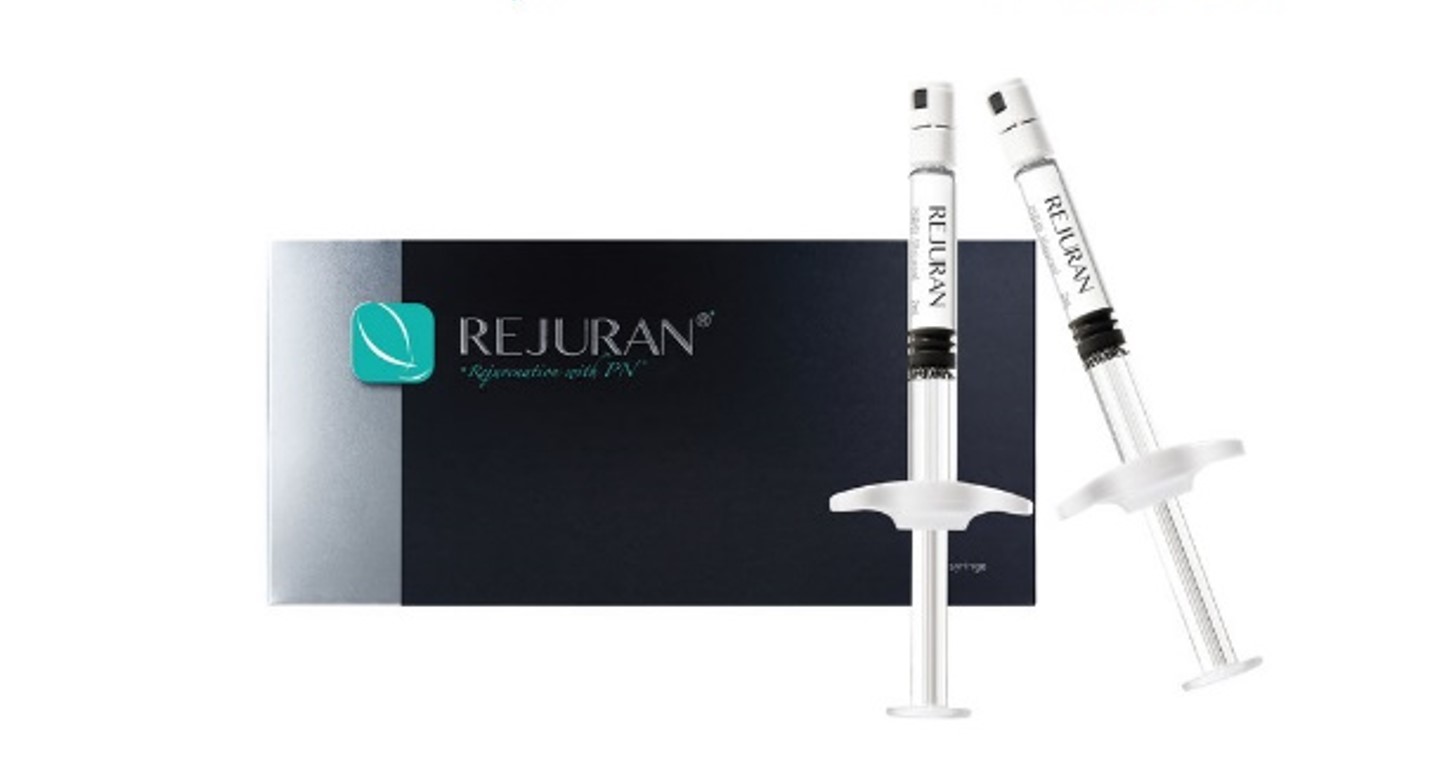
E. Rejuran Fillers
PDRN is a registered drug derived from salmon DNA, and it works by increasing collagen synthesis and repairing the damaged cell. When used for treatment on the under-eye area, it helps to brighten the skin, reduce fine lines, improve skin tautness, and decrease the prominence of eye bags and dark circles. This treatment costs around $500 – $700.
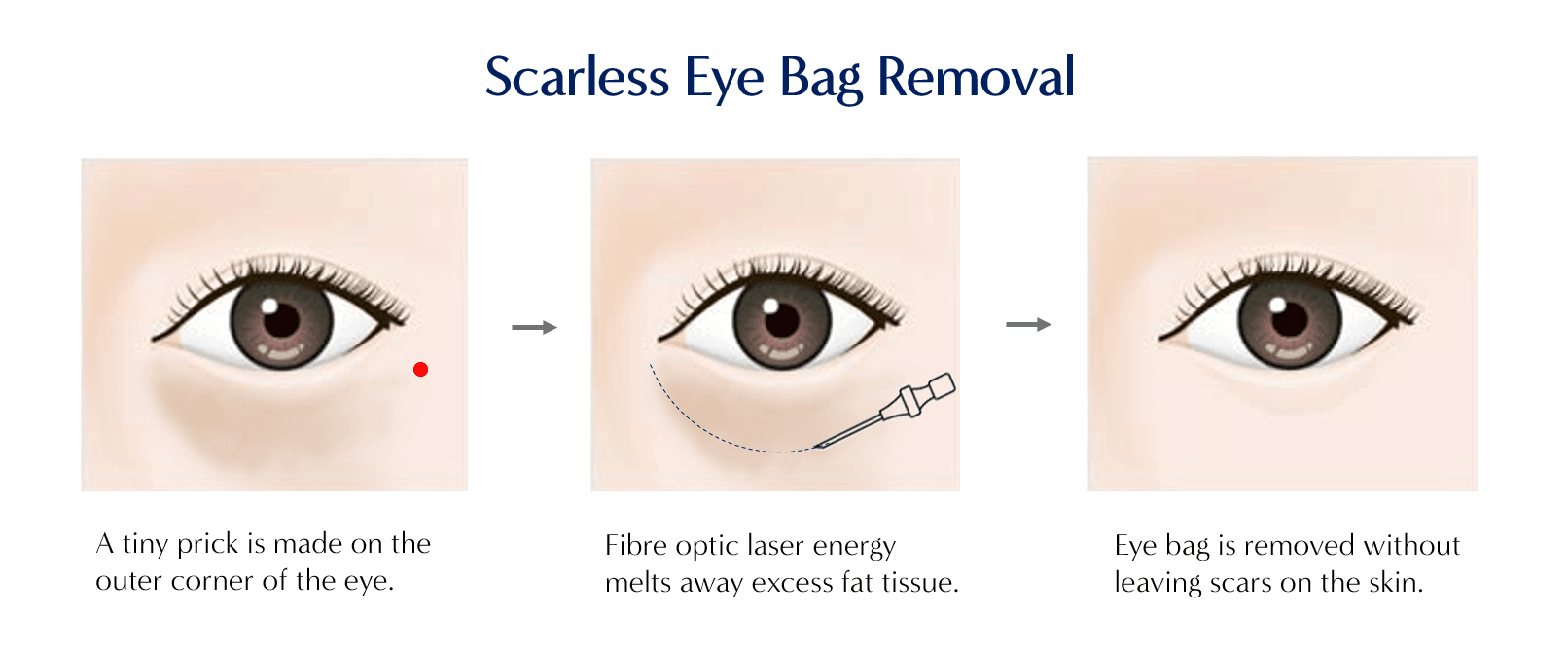
F. Scarless Eye Bag Removal
Scarless eye bag removal treatment: In this method, fat is liquified and removed with the help of the heat from a micro-optic fiber laser. Excess fat is extracted through a small needle prick on the lower eyelid which leaves no obvious scar on the face. This treatment on average costs around $1,800 – $2,800. This procedure is also popular for reducing eye bags.
It uses a 0.6 millimeter (600 micrometer) laser to remove the fatty tissues, accumulated fluid and excess skin permanently from the under eye area.

Some other non-surgical treatment options such as topical creams, lotions, specific diets, lifestyle modifications, and specific remedies can help treat type-1 and to certain extent type-2 eye bags.
Here is a table for better comparison of each treatment:
|
Non-Surgical Eye Bag Treatment |
About Treatment |
Cost |
|
Pico Laser |
Pico Laser is an effective procedure that breaks down the pigments at 450 picosecond laser pulses that are then removed by the body. This treatment can eradicate even obstinate pigmentations. It is a safer procedure as compared to other conventional laser treatments. |
$200 – $300 |
|
Dermal Fillers |
Eye bags can occur due to loss of bone and fat surrounding the eyes. The resulting sunken appearance can be corrected by hyaluronic filler. The filler is injected in the hollowed-out regions to restore the lost volume and lessen the eyebags’ appearance. |
$800 – $900 |
|
Thermage |
Thermage eye treatment makes use of radiofrequency energy for dermal heating and micro-resurfacing. It heats the collagen-rich layers deep in the skin. As a result, the existing collagen contracts and activates the formation of new collagen. Thus, corrects fine lines and wrinkles and improves the skin complexion, working to eliminate the eye bags. Thermage serves as the best non-invasive option for individuals who want to achieve the closest results to blepharoplasty without surgery. |
$2000 – $3,000
|
|
HIFU |
The High-Intensity Focused Ultrasound (HIFU) makes use of ultrasound energy to penetrate the deeper layers of the skin and generate heat, which likewise stimulates the production of collagen and elastin for skin lifting, tightening, and rejuvenation. Saggy skin and wrinkles are thus removed. |
$400 |
|
Rejuran |
Rejuran fillers are an anti-aging injection that consists of a salmon DNA, PDRN. It repairs the damaged tissues and activates collagen production, helping to diminish the appearance of dark eye circles. These fillers work by improving saggy skin and reducing fine lines and wrinkles, including crow’s feet. |
$500 – $700 |
|
Scarless Eye Bag Removal |
The Scarless Eye Bag Removal is a procedure in which permanent removal of fat tissue is done over the eye bag area. It utilizes a needle-sized laser of 600 micrometers (0.6 millimeters) for fat removal. The fiber optic laser is inserted through an almost invisible entry point at the corner of the eye to melt excessive fat. Hence, removing the eye bags without leaving scars. |
$1800 – $2800 |
Compared to surgical interventions, the non-surgical eye bag removal treatment is non-invasive and takes around 30 minutes to produce the results. Furthermore, it also requires a shorter recovery time and has less documented side effects.
The doctor will examine a person’s overall health, the amount of fat under the eyes, and sagginess of the skin and help the patient determine what procedure will be the most effective.
Surgical Eye Bag Removal Treatment
Your doctor may recommend getting an eye bag removal surgery depending on your age, under eye fat or fluid, and sagging of the skin. Complex eye bag type – Type 3 eye bags with a lot of fat and decreased skin elasticity are always preferred to be treated through surgical interventions.
These include:
A. Transconjunctival Eye Bag Removal

This procedure involves a small incision inside the lower eyelid. In this method, the surgeon uses an electrocautery to make the cut and remove the fat. This technique is more popular because it leaves no visible scars on the outside of the eye.
This technique is the best choice for individuals who are young and have good skin elasticity. The procedure provides best results to individuals with mild to moderate eye puffiness and less skin under the eyes.
B. Incisional Eye Bag Removal

This technique involves making a small incision along the lower lashline to remove stubborn fat and fluid. Incisional eye bag removal is shown to produce best results for individuals with moderate puffiness, excessive skin under the eyes, and dark circles which need skin tightening to remove them.
C. Fat Repositioning
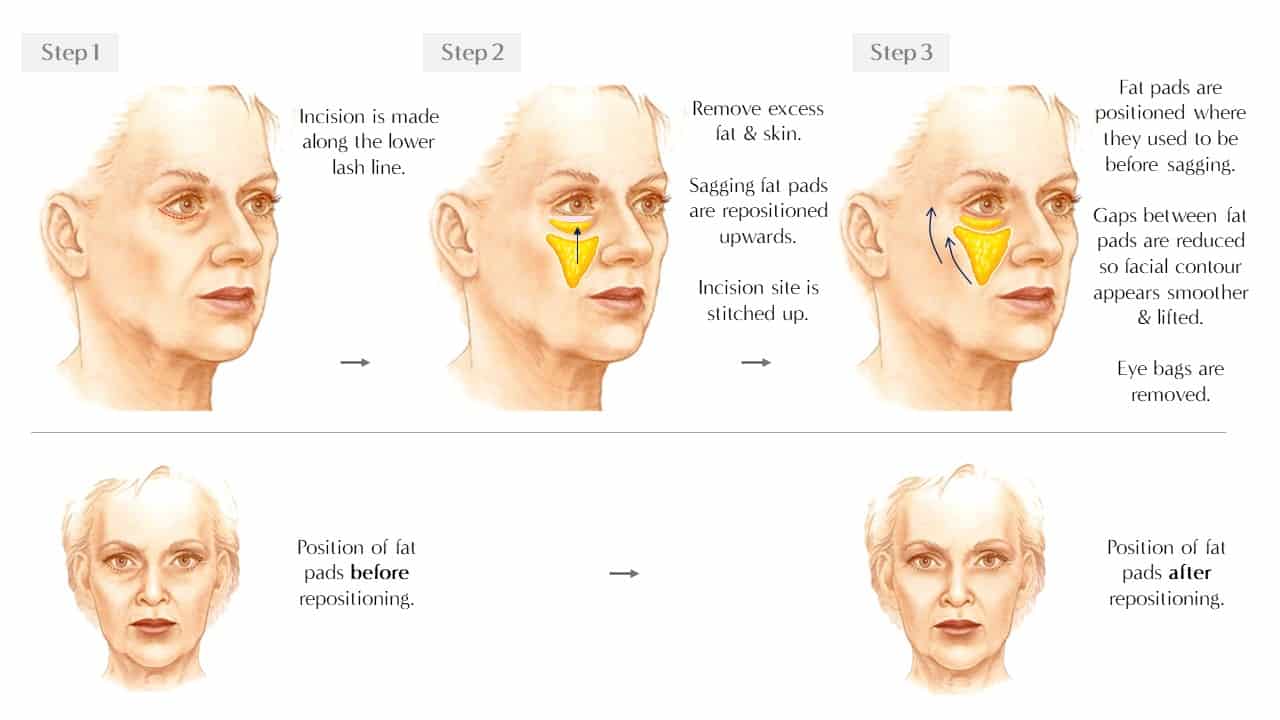
As its name suggests, eye bag surgery with fat repositioning involves surgical intervention to remove and reposition fatty tissue under the eyes to smooth out wrinkles and reduce eye bags. The procedure also corrects any outward bulge and fills up the sunken area to create a smooth and taut contour. Read more about eye bag removal and fat repositioning.
How To Go About Choosing The Right Treatment?
How Severe Is The Eye Bag Condition
The severity of the eye bag condition directly influences the treatment option one has to choose. For example, if a person has slight bulging of eyes with less amount of fat and fluid, non-surgical treatment options such as creams, dermal fillers, and laser treatment. Surgical interventions like blepharoplasty and fat repositioning would be better for more severe eye bag conditions with a lot of fat and sagginess of the skin.
Your Preference For Surgical Or Non-Surgical Options
In general, plastic surgeons recommend trying non-surgical treatment options such as creams, laser removal, or dermal fillers to reduce mild to moderate eye bags. However, if the condition is severe or you are not satisfied with the non-surgical remedies, surgical procedure would likely give better results.
Speak To Us About Your Eyebag Concerns
Eye bags are of different types and classified according to the severity of the condition. Young people often experience type-1 eye bags or occasionally type-2 eye bags secondary to several dietary or environmental factors.
The treatment also depends on the type and severity of the eye bags. Type-1 and type-2 eye bags can be managed non-surgically with remedies like dermal fillers and scarless laser removal. More complicated cases of eye bags – those with pockets of excess fat and skin – are better managed through surgical interventions, such as transconjunctival eye bag removal, incisional eye bag removal and fat repositioning.
References:
1.Mayo clinic staff. Bags under eyes. Dec, 2019. https://www.mayoclinic.org/diseases-conditions/bags-under-eyes/diagnosis-treatment/drc-20369931
2.Desai S C. How to Get Rid of Bags Under Your Eyes. https://www.hopkinsmedicine.org/health/treatment-tests-and-therapies/how-to-get-rid-of-bags-under-your-eyes
3.Understand under eye bag types before you regret. https://www.juvly.com/learning-center/undereyes/understand-under-eye-bag-types-before-you-regret/
About Dream Aesthetics and Plastic Surgery
Bespoke surgical for cosmetic or medical reasons is what Dream covers to bring out the beauty in every individual. Going beyond the aesthetics and working on physical anomalies are what we value the most in leading our patients to cherish self-improvement and confident lifestyles.
Derived from Associate Professor Vincent Yeow’s long-standing experience performing plastic surgery in Singapore, our treatment plans deliver physical remodelling in our patients’ favour. One of the notable remodellings is droopy eyelid correction. The ptosis surgery used for treatment eventually fixes drooping eyelids, improves vision and enhances appearance.
Most importantly, as a trustworthy plastic surgery and aesthetic clinic, we treasure positive and natural outcomes for each individual. We will ensure to deliver the beauty refinement of your dream without compromising your safety and privacy.

